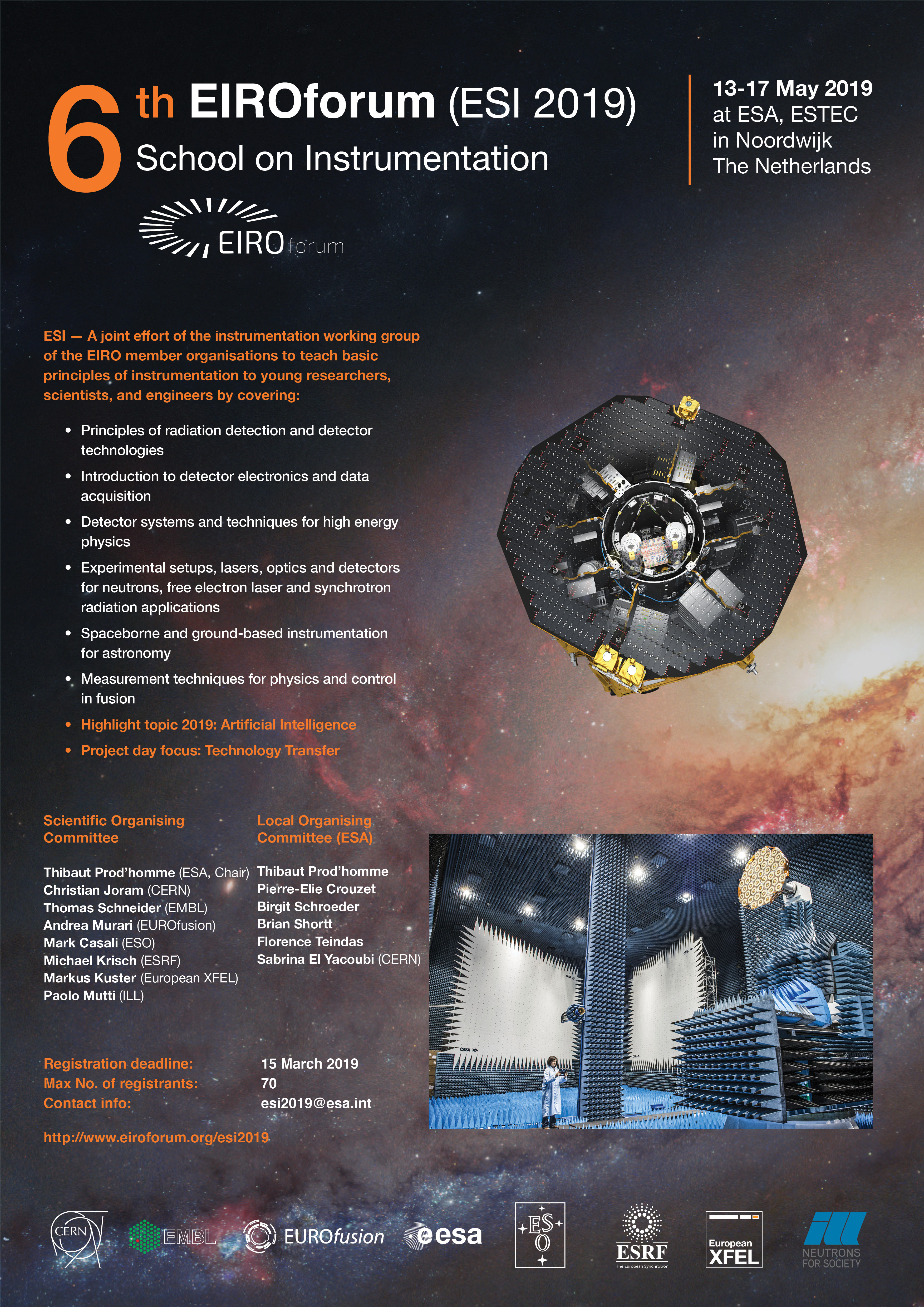6th EIROforum School on Instrumentation
→
Europe/Zurich
ESTEC, Noordwijk, The Netherlands
ESTEC, Noordwijk, The Netherlands
Description
The 6th EIROforum School on Instrumentation (ESI 2019) took place from 13-17 May 2019 and was hosted by ESA. The school sessions were held on the ESTEC site in Noordwijk, The Netherlands.
ESI, organised by the EIROforum Instrumentation Working Group, aims at teaching basic principles of instrumentation to young researchers, scientists and engineers. The highlight topic of ESI 2019 was Artificial Intelligence with a project day focus on Technology transfer.
The summary report of the school is available here. Pictures and more information is available on twitter: https://twitter.com/esi2019


Support
Participants
113
View full list
